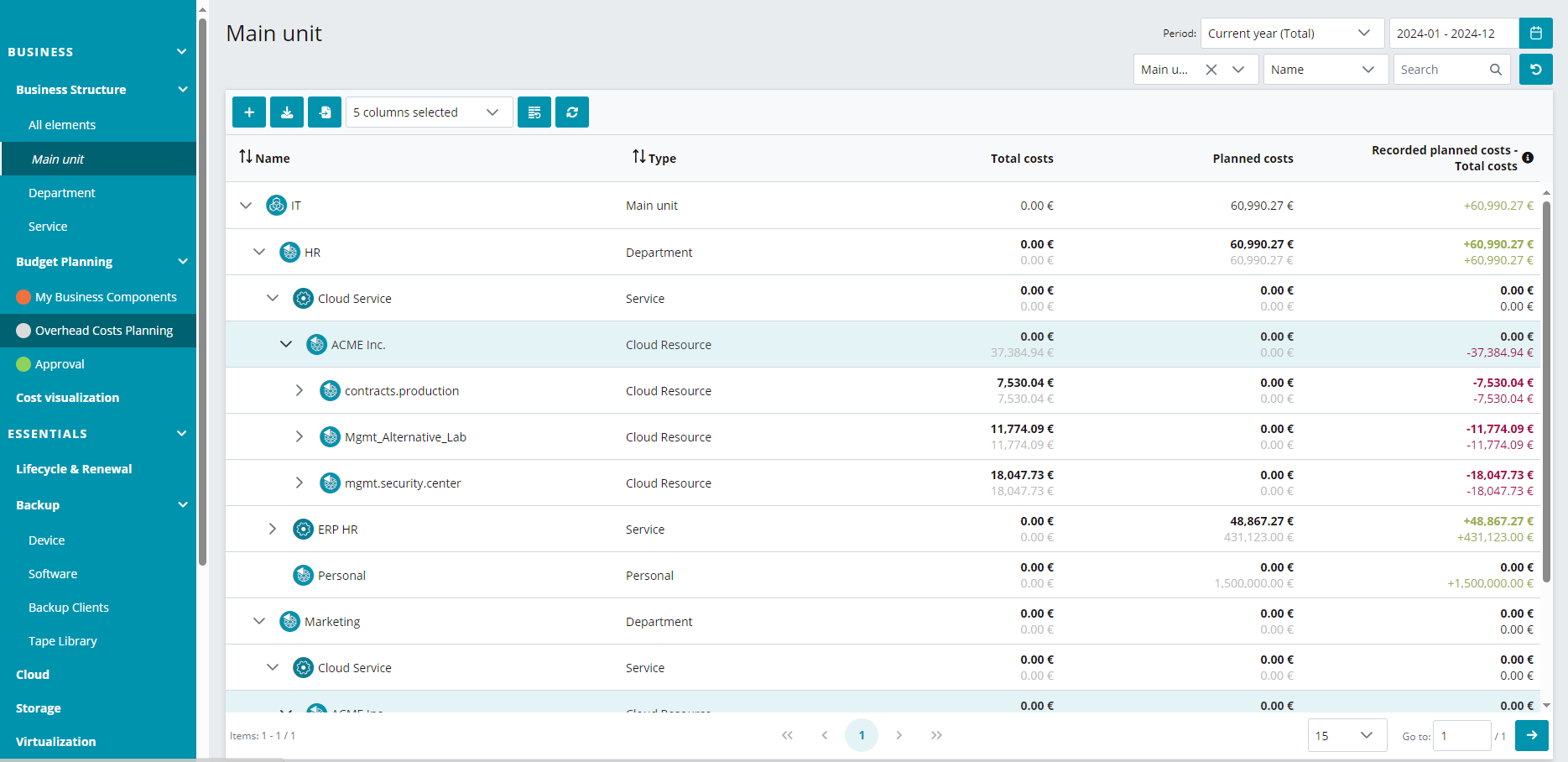Budget Planning Process with CIO COCKPIT
Demand
Assessment of Business Objectives: The IT budgeting process must align with the overarching business goals and strategies. This involves evaluating planned business activities and their impact on IT.
- Challenges: Lack of alignment between IT and business objectives, unclear or changing business strategies.
- Solutions with CIO COCKPIT: Capturing demands from the business through a guided process implemented in CIO COCKPIT, enabling seamless cooperation between business and IT. This leads to faster planning and more accurate results.
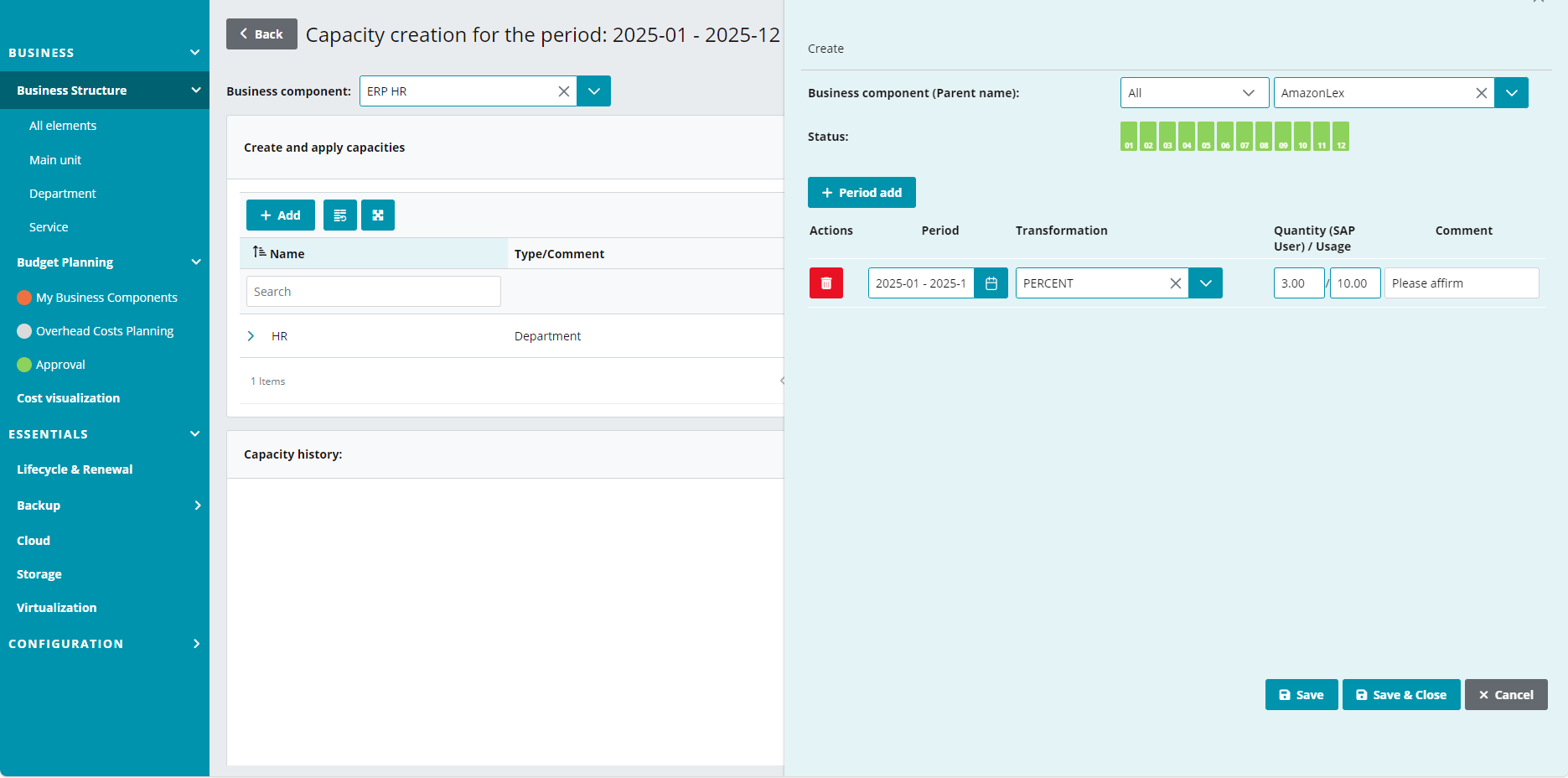
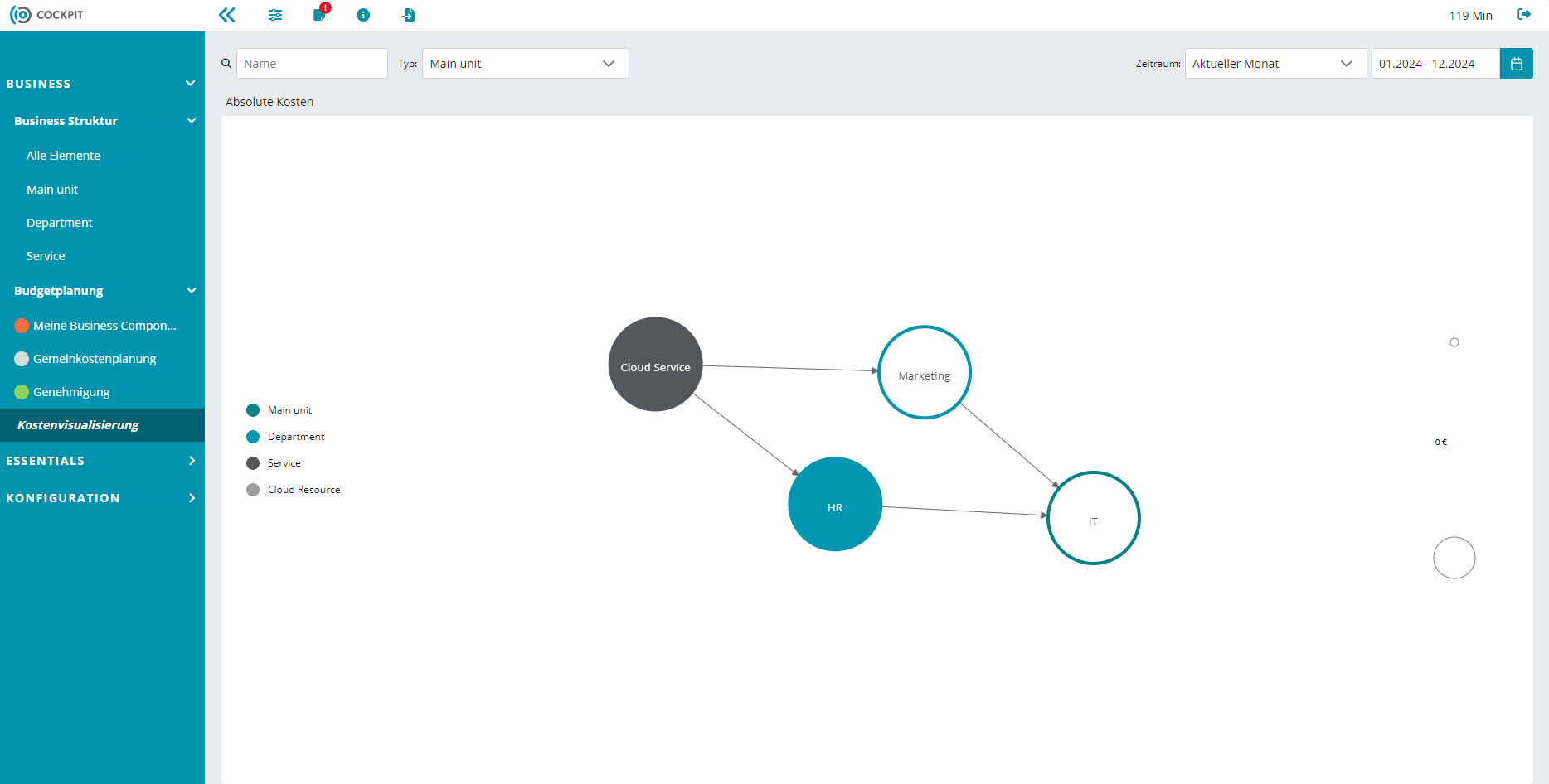
Forecasting Future Needs and Trends: Businesses need to consider future IT trends and requirements, such as new technologies, software upgrades, infrastructure expansions, or increased need for IT security.
- Challenges: Difficulty in predicting the impact of technology trends due to lack of transparency, and issues in comparing with existing solutions.
- Solutions with CIO COCKPIT: Transparent comparison with drill-down capabilities, allowing for detailed level navigation and providing forecasting and planning functions to predict impacts.
Consultation with Stakeholders: IT managers and finance teams often collaborate with various stakeholders to understand their needs and priorities, including CEOs, department heads, IT staff, and sometimes external partners.
- Challenges: Conflicts between different stakeholders’ requirements, communication issues due to differing languages.
- Solutions with CIO COCKPIT: While communication issues may never be entirely eliminated, shared processes and a common data foundation in CIO COCKPIT significantly reduce these problems. Improved reporting and collaborative working facilitated by the solution also ease communication.
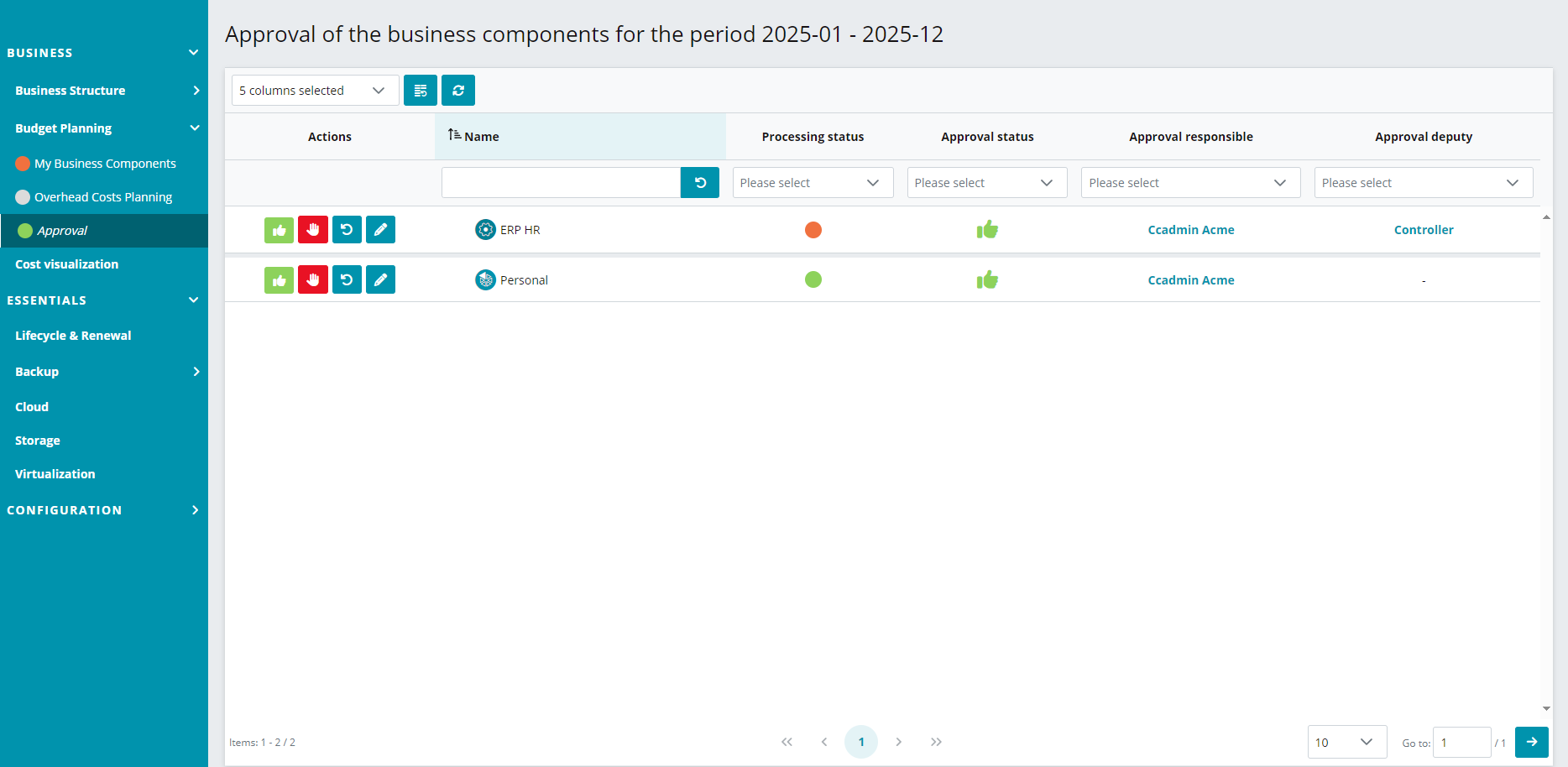
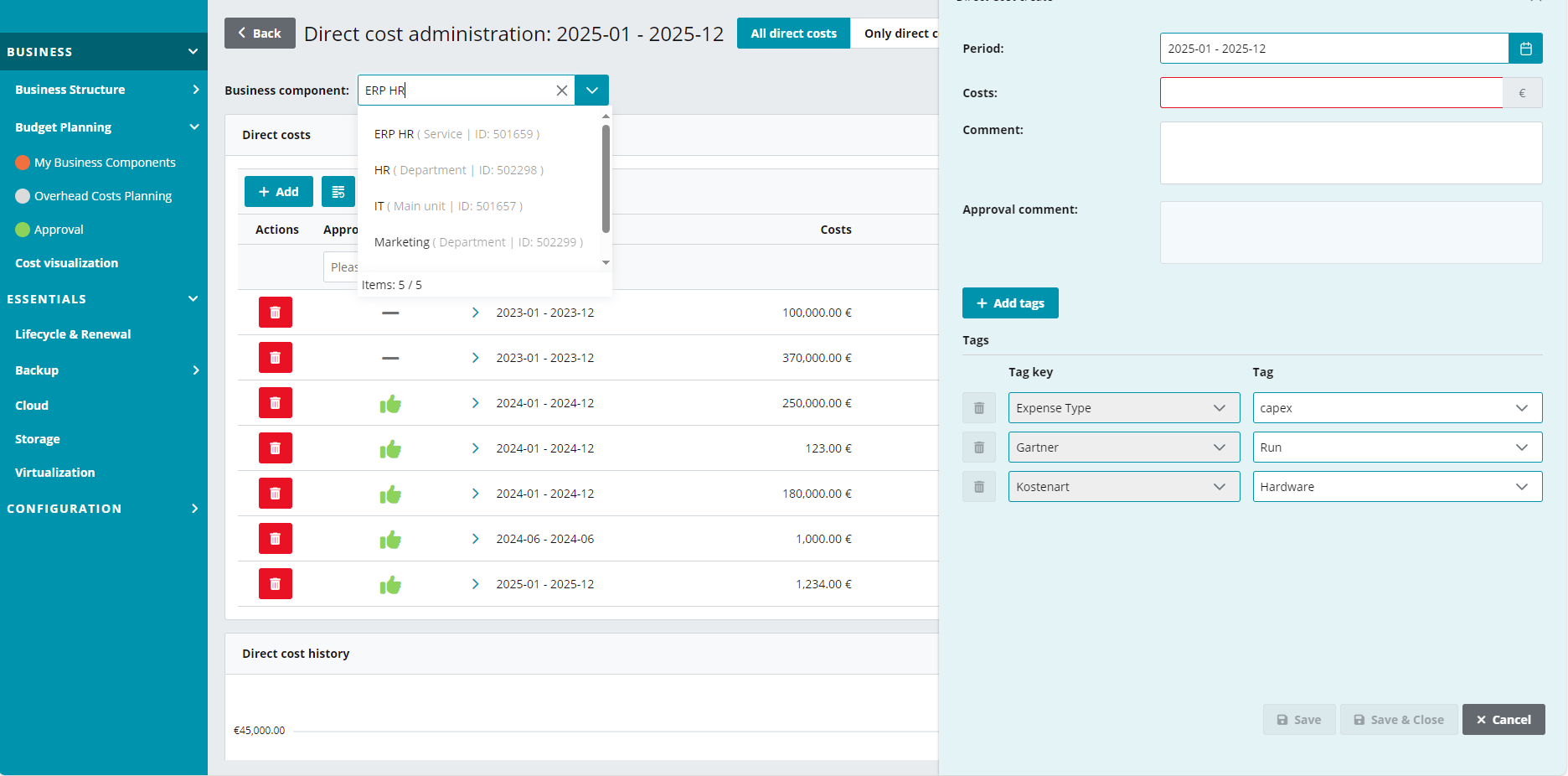
Capacity
Analysis of Current Expenditure: Evaluating current capacity and unit costs based on current spending.
- Challenges: Analyzing current IT spending for capacity planning is often complicated by the complexity of IT infrastructure and alignment with changing business goals.
- Solutions with CIO COCKPIT: Relevant metrics like unit costs or TCO are automatically generated when maintaining the cost model in CIO COCKPIT, made easy and quick through imports and interfaces.
Cost
Analysis of Current Expenditure: Before setting new budgets, companies analyze their current IT spending, including costs for hardware, software, personnel, maintenance, support, projects, and other IT-related expenses.
- Challenges: Analyses often fail due to poor data quality and difficulties in segregating expenses.
- Solutions with CIO COCKPIT: The cost model (Business Tree) in CIO COCKPIT reflects the true cost of each customer. Tagging allows for multiple dimensions of evaluation, presented in automatically updated dashboards.
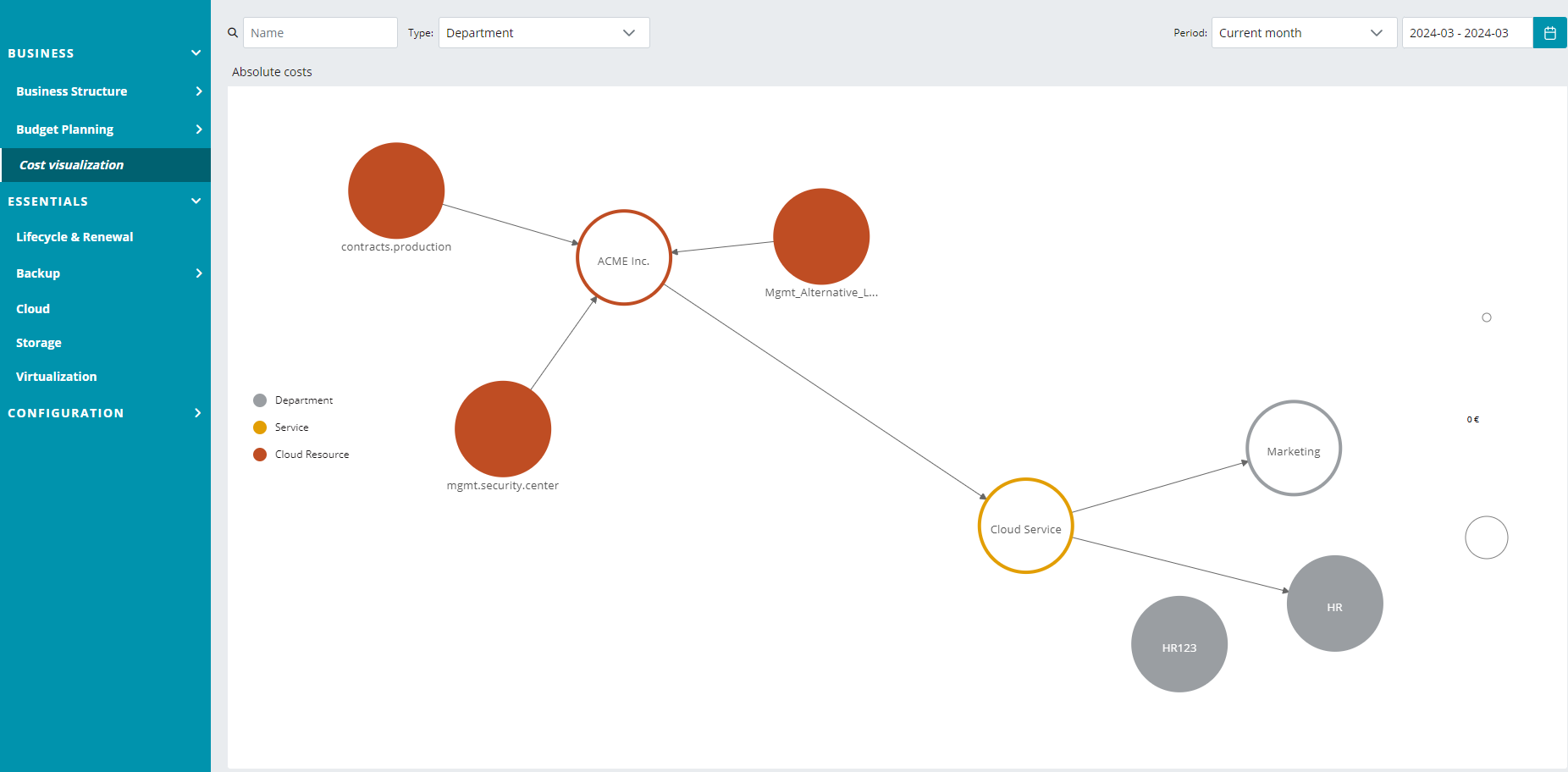
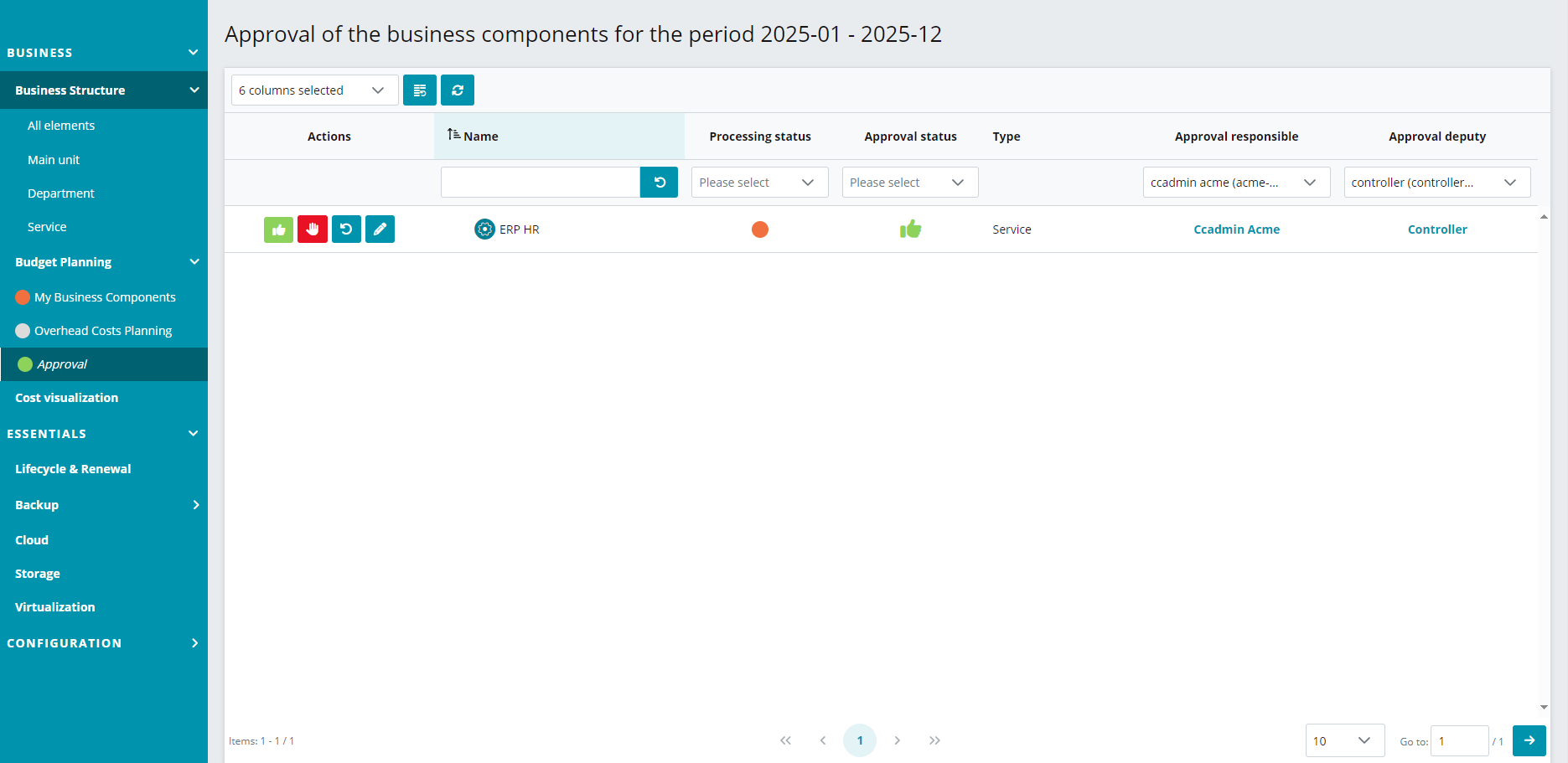
Drafting the IT Budget: A budget draft is created based on the gathered information.
- Challenges: Data scattered across the company in various departments in different forms, often in spreadsheets, leading to major allocation challenges and difficulties in cost estimation.
- Solutions with CIO COCKPIT: A guided process focused on relevant information for each role (CIO, CFO, IT Controller, etc.) based on a consolidated data foundation.
Review and Adjustment: The budget draft is reviewed and adjusted through forecasts to ensure it is realistic and aligns with corporate goals. Multiple iterations may be required.
- Challenges: Outdated data spread across various systems and locations poses a significant challenge, requiring a highly time-consuming process for data renewal, integration, and consolidation.
- Solutions with CIO COCKPIT: Data automation with CIO COCKPIT’s Data Collection Management Platform (DCM) ensures current data. Actual vs. planned comparisons are displayed at the push of a button.
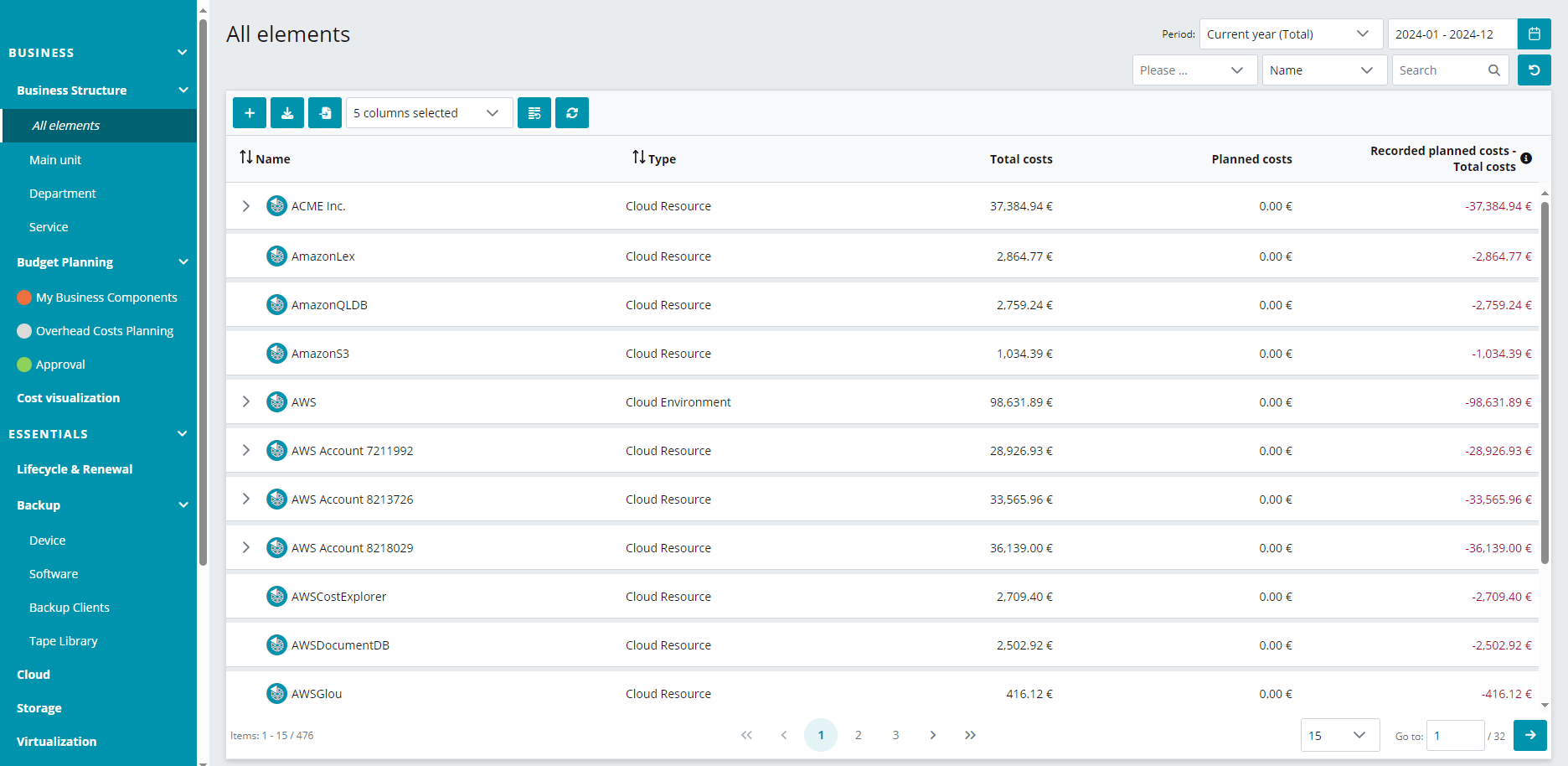
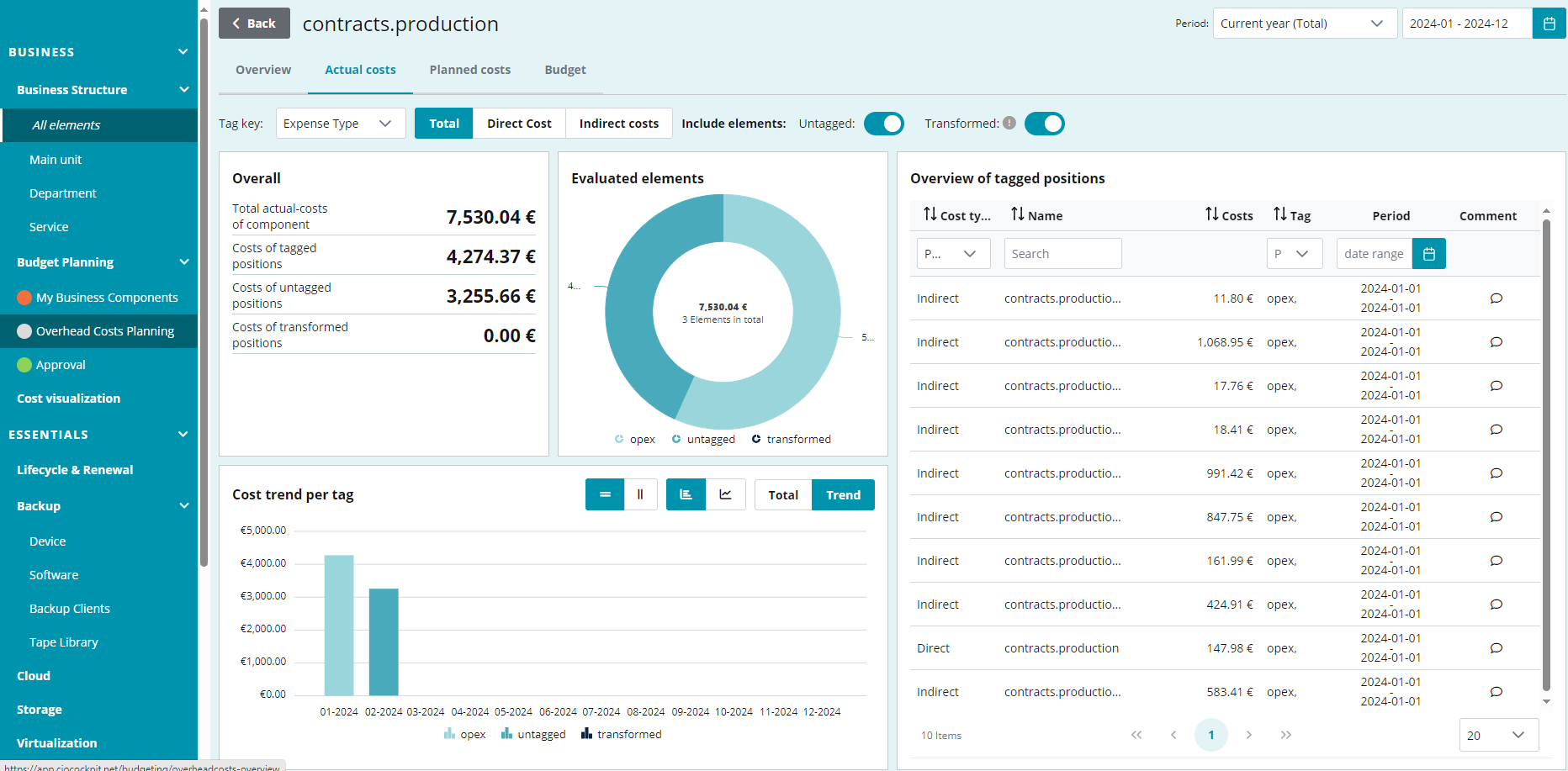
Allocation
Estimation and Implementation: The distribution of allocations or overhead costs is the final step before entering budget negotiations and approval.
- Challenges: Lower explainability due to the absence of clear distribution keys.
- Solutions with CIO COCKPIT: A dedicated process step with input and distribution support. Cost collectors can be defined as needed and manually distributed by percentage, equally, or based on capacity.
Approval
Approval: The proposed budget is submitted to the company’s management for approval. This may require the consent of the board, CFO, or other senior executives.
- Challenges: Lengthy approval processes often accompanied by a lack of understanding from the company’s management lead to delays and inefficiency in project execution.
- Solutions with CIO COCKPIT: Presentation of relevant information at the push of a button, with explainability through drill-down into the model always available.
